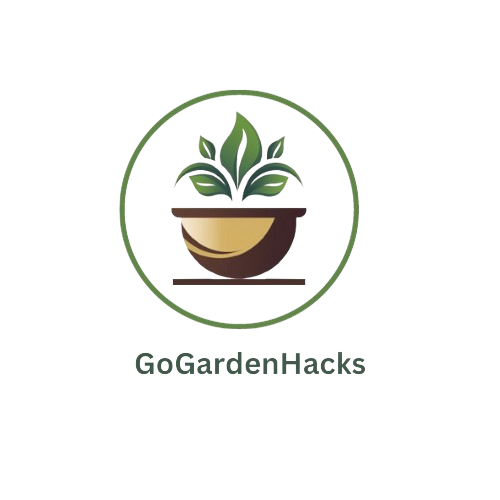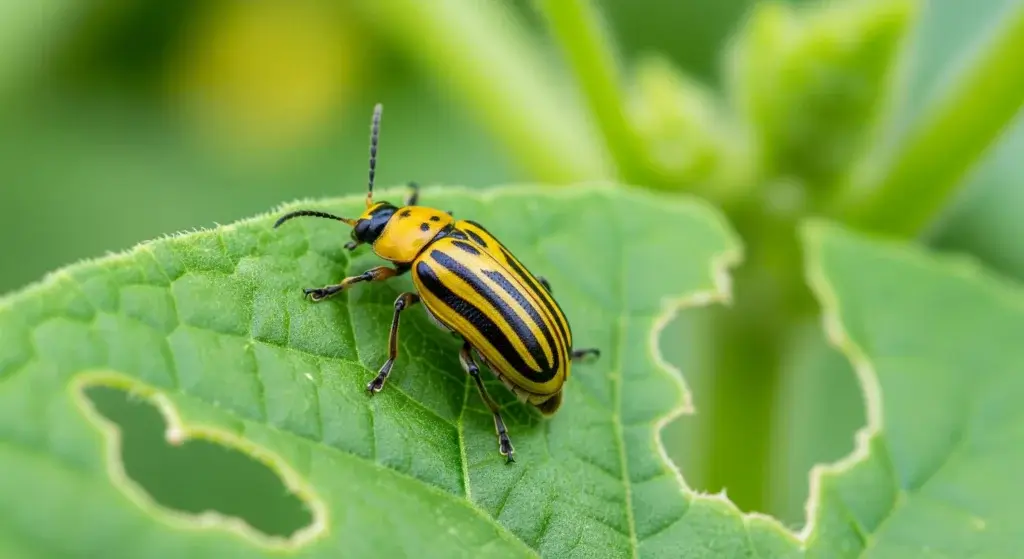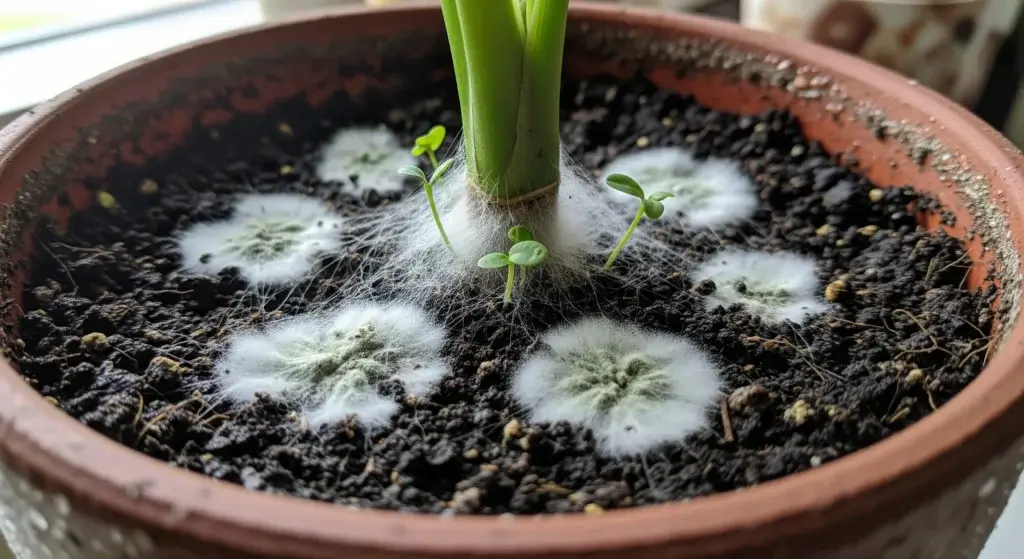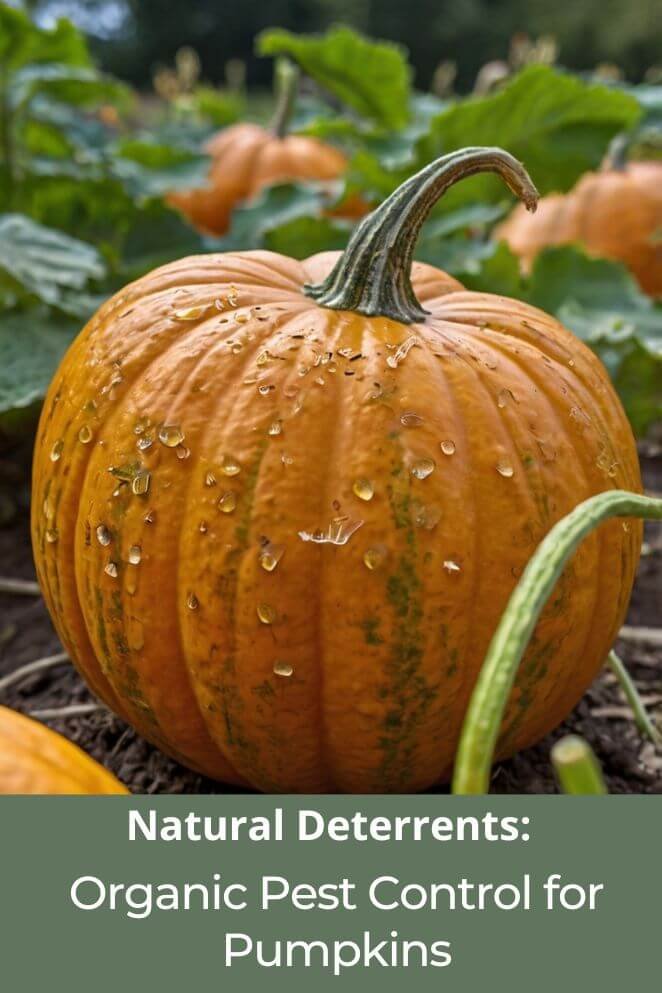
Pumpkins are a favorite crop for gardeners, whether for delicious pies, festive décor, or even carving spooky jack-o’-lanterns.
However, they often attract unwelcome visitors—pests and diseases that can wreak havoc on your plants.
If you’re looking for eco-friendly ways to protect your pumpkins, this guide covers effective organic pest control methods to keep your crop thriving without chemicals.
Common Pumpkin Pests
Pumpkins, like many plants, can be targeted by pests that affect their health and growth.
Identifying these pests early on is key to preventing damage and keeping your pumpkin plants healthy.
Squash bugs
Squash bugs are brown, shield-shaped insects that feed on the sap of pumpkin leaves.
This weakens the plant, causing the leaves to wilt and eventually die.
Signs of infestation
- Yellowing or wilting leaves.
- Clusters of small, red or brown eggs found on the underside of the leaves.
Squash vine borers
These pests tunnel into the base of pumpkin vines, where they cause serious damage by blocking the plant’s ability to transport water and nutrients.
Signs of infestation
- Sawdust-like frass (insect droppings) near the base of vines.
- Sudden wilting or collapse of vines, especially in the early morning when the plant is still hydrated.
Powdery mildew
While powdery mildew is a fungal disease, it often shows up alongside pest infestations.
It appears as a white, powdery coating on the leaves, which interferes with the plant’s ability to perform photosynthesis and hampers its overall health.
Signs of infestation
- White, powdery spots on leaves, particularly on the underside.
- Leaves may become yellow or curl as the disease spreads.
Other pests
- Aphids: Tiny insects that cluster on the leaves and stems, sucking out sap. This weakens the plant and can cause yellowing of the leaves.
- Cucumber beetles: These beetles have striped or spotted bodies and chew holes in leaves. They can also carry diseases, making them a serious threat to pumpkins.
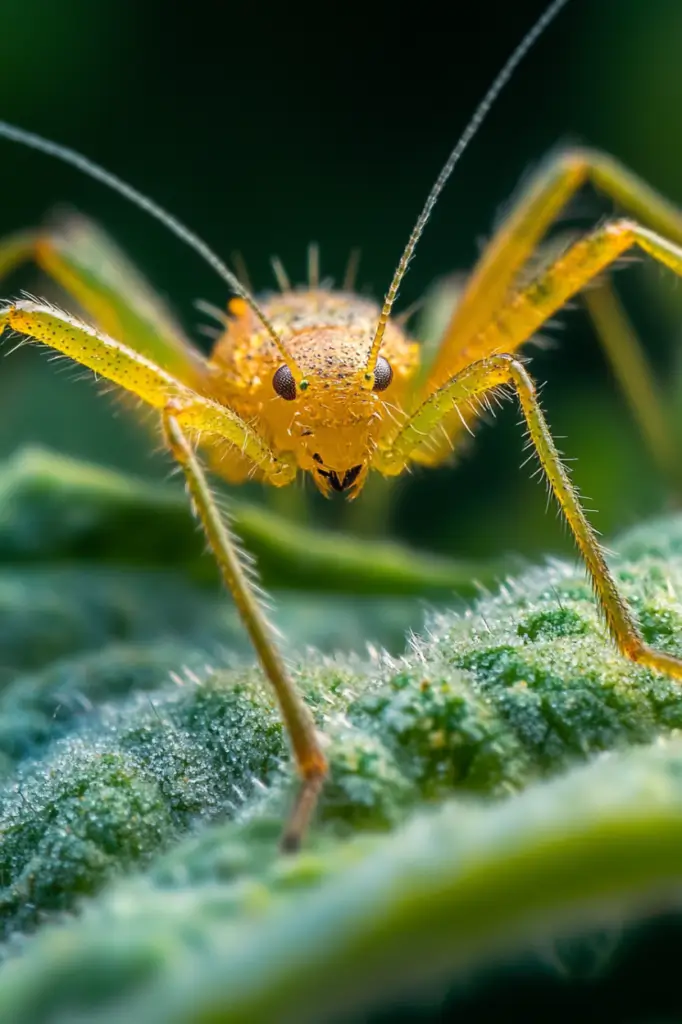
Impact of Pests
If pests aren’t controlled, they can have a serious impact on your pumpkin plants.
Here’s how they can affect your garden:
Reduced yield
Pests can damage the vines and leaves of pumpkin plants, which limits the plant’s ability to produce fruit.
This means fewer pumpkins to harvest.
Stunted growth
When pests suck out nutrients or damage the leaves, the plant has trouble growing properly.
This affects the size and quality of the pumpkins, leaving you with smaller, less healthy fruit.
Crop loss
In severe cases, pests can damage your pumpkin plants so much that they die completely.
This leads to a total loss of your crop, making it harder to grow pumpkins in that area for the season.
Organic pest control can help minimize these risks while keeping your garden eco-friendly.
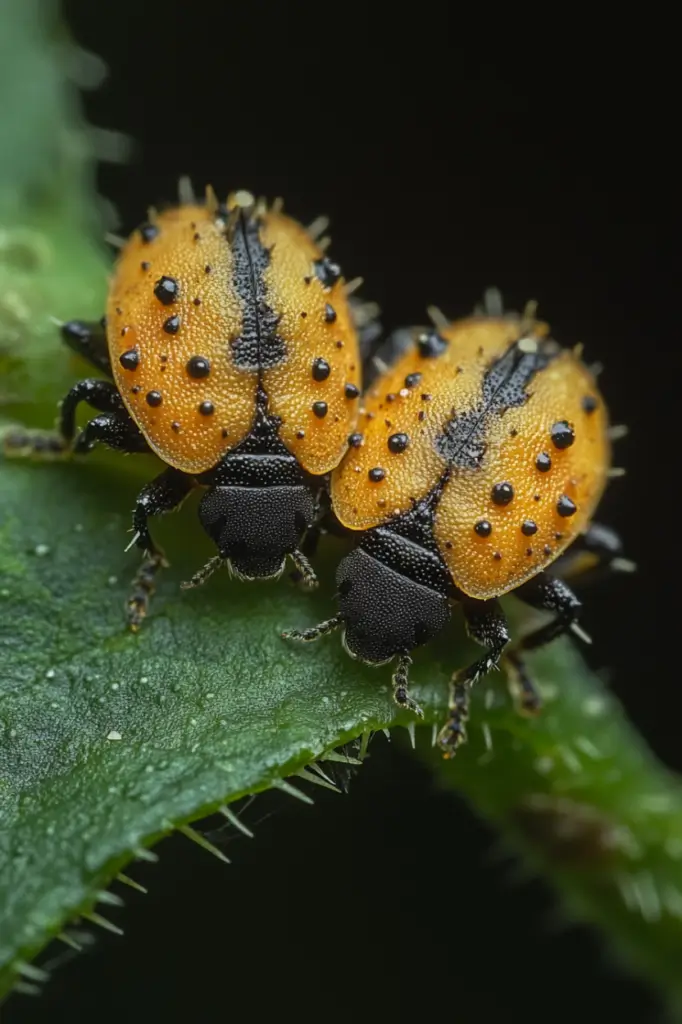
Organic Pest Control Methods
Now that you know the culprits, let’s explore how to protect your pumpkins using natural methods.
Cultural practices
Using the right cultural practices in your garden can help reduce pest problems and keep your pumpkin plants healthy.
Here are a few important strategies:
Crop rotation
Crop rotation means changing the location where you plant pumpkins each year.
This helps reduce pest populations because many pests stay in the soil, waiting for their favorite crops to grow.
By rotating crops, you disrupt their life cycle, making it harder for pests to build up in the soil and damage your plants.
Ideal planting time
Timing is key when planting pumpkins.
By planting at the right time, you can avoid pest outbreaks.
For example, certain pests like squash bugs and vine borers are more active during the warmer months.
Planting your pumpkins early in the season or slightly later can help avoid peak pest times, reducing the chances of infestation.
Plant selection
Choose pumpkin varieties that are resistant to pests and diseases.
Some pumpkin varieties are bred to be more tolerant of specific pests like squash bugs or powdery mildew.
Selecting these varieties can help your plants withstand some of the challenges that pests bring.
Proper watering and fertilizing
Healthy plants are less likely to fall victim to pests.
Proper watering and fertilizing help keep your pumpkin plants strong and robust.
Over-watering or under-watering can stress the plants, making them more vulnerable to pests.
Make sure your pumpkins get the right amount of water and nutrients to stay healthy, and they’ll be better equipped to fight off pests on their own.
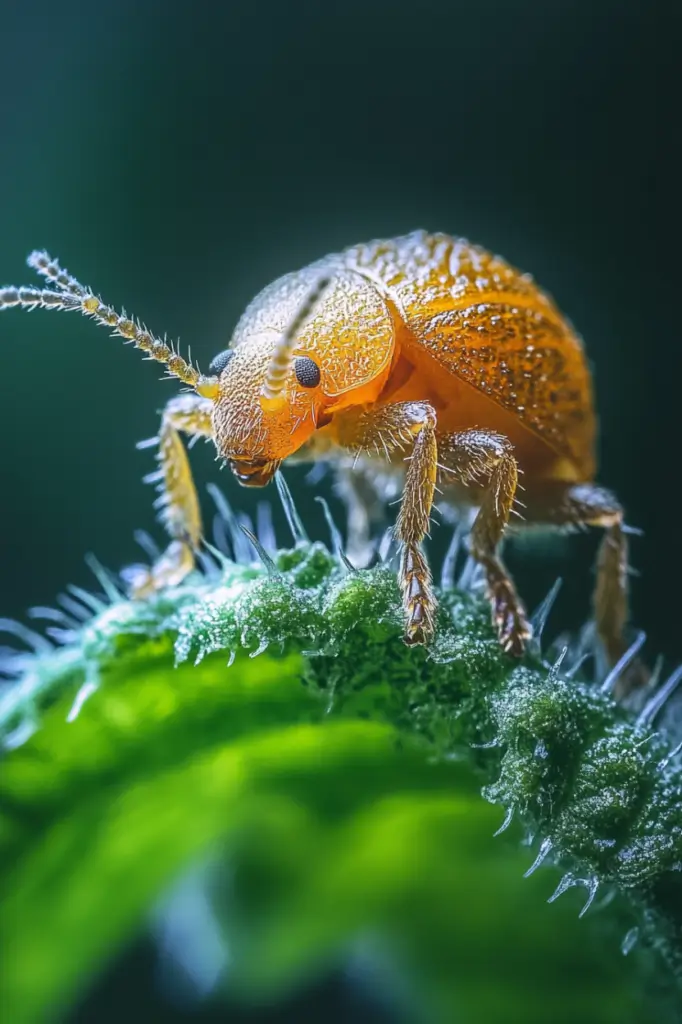
Physical controls
There are a few hands-on ways to keep pests away from your pumpkin plants without using harsh chemicals.
These physical controls can be effective, especially for smaller gardens or when you catch problems early.
Handpicking
One of the simplest and most direct methods is to pick pests off your plants by hand.
This works especially well for pests like squash bugs and aphids, which are easy to spot.
Wear gloves if you like and gently remove the pests from your pumpkins.
You can either squish them or drop them into a bucket of soapy water to dispose of them.
This method is safe, non-toxic, and effective for small infestations.
Row covers
Row covers are lightweight fabrics that you can drape over your pumpkin plants to protect them from pests.
These covers allow sunlight, air, and rain to reach your plants but keep insects out.
Use row covers especially early in the season when pests like squash bugs and cucumber beetles are most active.
Be sure to remove the covers during blooming and fruiting to allow for pollination.
Neem oil
Neem oil is a natural, plant-based insecticide that can help protect your pumpkins from pests.
It works by disrupting the pests’ feeding and breeding patterns, ultimately reducing their population.
Neem oil is safe for plants, pets, and humans, making it a great option for organic gardening.
It’s effective against a variety of pests, including aphids, squash bugs, and caterpillars.
Simply mix it with water and spray it on the leaves and stems of your pumpkins.
Just be sure to follow the instructions on the label for proper dilution and application.
Biological controls
Using natural methods to control pests can help protect your pumpkins without chemicals.
Beneficial Insects
Invite helpful insects like ladybugs and lacewings to your garden.
Ladybugs eat aphids, while lacewings target aphids and other pests, naturally keeping your plants safe.
Diatomaceous Earth
Diatomaceous earth (DE) is a natural powder that damages insect exoskeletons, causing them to dehydrate and die.
Sprinkle it around your plants to control pests like ants and beetles. Reapply after rain or watering.
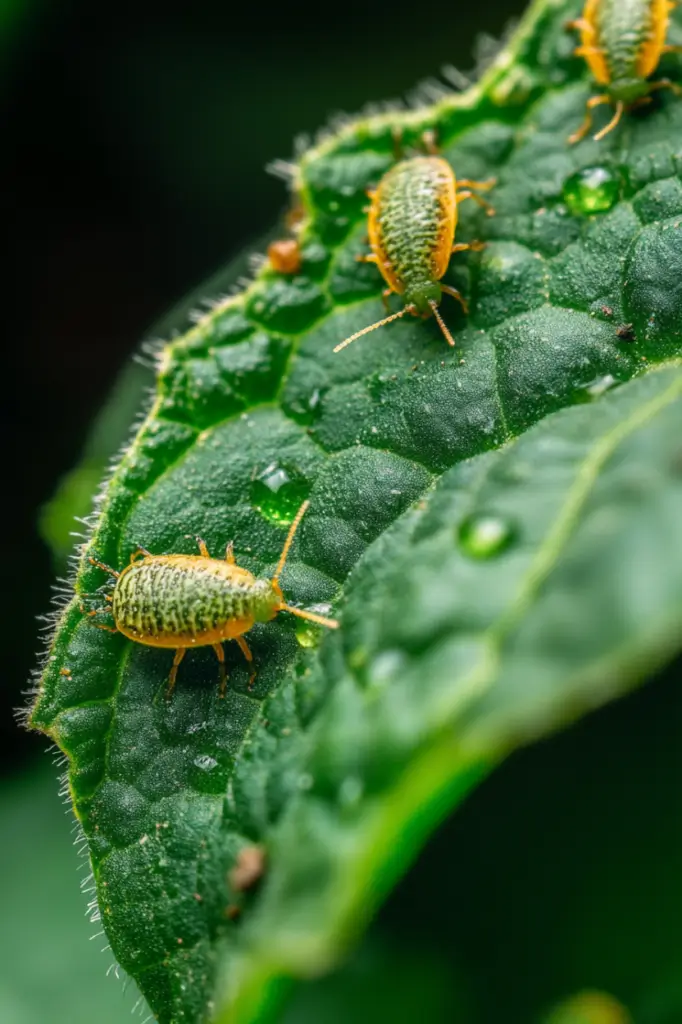
Homemade Sprays
If you’re looking for natural ways to protect your pumpkins from pests, homemade sprays can be a simple and effective solution.
Here are two easy-to-make recipes:
Pepper spray
Pepper spray works by irritating pests, deterring them from munching on your plants.
Here’s how to make it:
Ingredients
- 1 tablespoon of cayenne pepper or hot chili powder
- 1 quart of water
- A few drops of dish soap (to help it stick)
Instructions
- Mix the pepper and water in a spray bottle.
- Add the dish soap and shake well.
- Spray it on the leaves and stems of your pumpkins, focusing on areas where pests are active.
- Reapply after rain or watering.
Garlic spray
Garlic acts as a natural repellent for many pests, including aphids and beetles.
Here’s a simple recipe:
Ingredients
- 1 bulb of garlic (about 10 cloves)
- 1 quart of water
- 1 teaspoon of vegetable oil
- A few drops of dish soap
Instructions
- Crush the garlic cloves and let them sit for about 10 minutes.
- Boil the garlic in water for 15 minutes, then let it cool.
- Strain the garlic and pour the liquid into a spray bottle.
- Add the vegetable oil and dish soap and shake it well.
- Spray on the leaves and vines of your pumpkin plants.
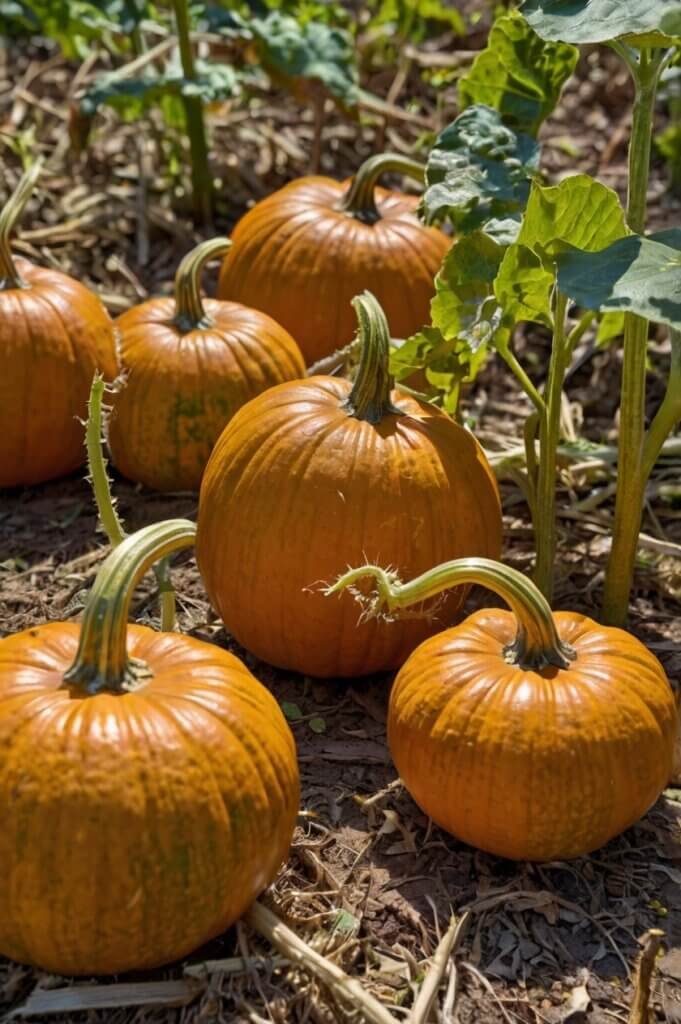
Tips for Maintaining Organic Pest Control
To keep your pumpkin plants healthy and pest-free, it’s important to stay on top of maintenance and be proactive.
Here are some simple, natural ways to manage pests:
Inspect regularly
Check your plants every few days for signs of pests or disease.
Early detection can help you take action before the problem spreads.
Remove weeds
Weeds can provide a hiding spot for pests, so keep the area around your pumpkins free of them.
This makes it harder for pests to find shelter and food.
Monitor weather conditions
Pests often thrive in warm, humid weather, so stay especially vigilant during these conditions.
After a rainy spell or in hot weather, check your plants more often for pest activity.
Encourage biodiversity
A healthy garden with a mix of plants and flowers attracts beneficial insects like ladybugs and bees.
These helpful critters can keep pest populations in check naturally.
Final Thoughts
Organic pest control is an effective way to protect your pumpkins while preserving the health of your garden and the environment.
With the methods outlined here, you can minimize damage, promote plant health, and enjoy a bountiful harvest of pumpkins.
From cultural practices to homemade sprays, there’s a solution for every gardener to keep pests at bay naturally.
